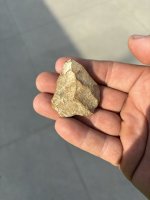UncleVinnys
Bronze Member
OK, a question for the folks with experience . . .
Is there any relationship to how old a coin is and how deep it is in the ground?
You would think that the older coins would be deeper, but I'm finding
that is not always the case.
What is your experience??
Related to that: Can you estimate how much debris builds up over 1 year?
Over 10 years?
I expect it would vary by region, weather, vegetation, soil type, etc.
What's your take on this?
Besides coins, I am interested in finding meteorites, and I am wondering
how many years after they fall that they can be retrieved before they
rust and disintegrate.
Thanks in advance. My experience here on the forum is that there
is a wealth of information from friendly and knowledgeable people, so
I appreciate your help.
Is there any relationship to how old a coin is and how deep it is in the ground?
You would think that the older coins would be deeper, but I'm finding
that is not always the case.
What is your experience??
Related to that: Can you estimate how much debris builds up over 1 year?
Over 10 years?
I expect it would vary by region, weather, vegetation, soil type, etc.
What's your take on this?
Besides coins, I am interested in finding meteorites, and I am wondering
how many years after they fall that they can be retrieved before they
rust and disintegrate.
Thanks in advance. My experience here on the forum is that there
is a wealth of information from friendly and knowledgeable people, so
I appreciate your help.




